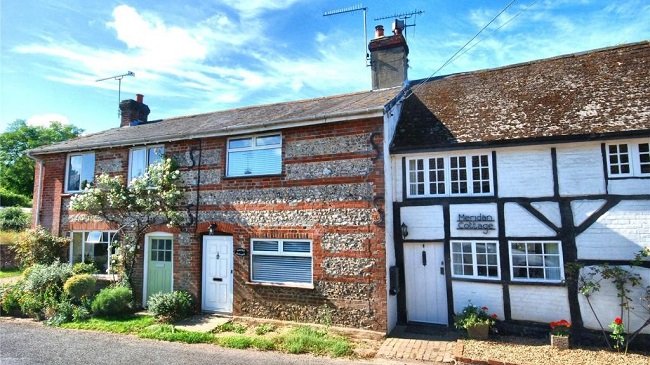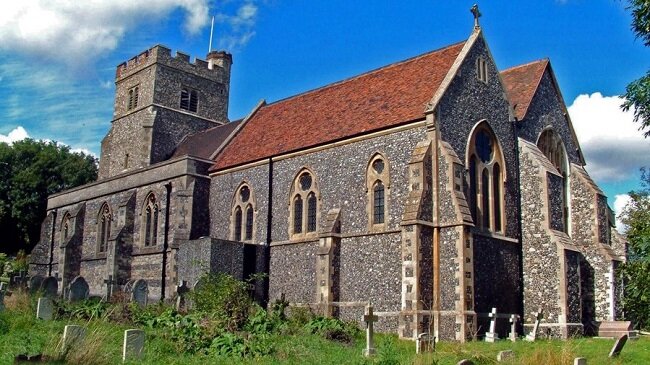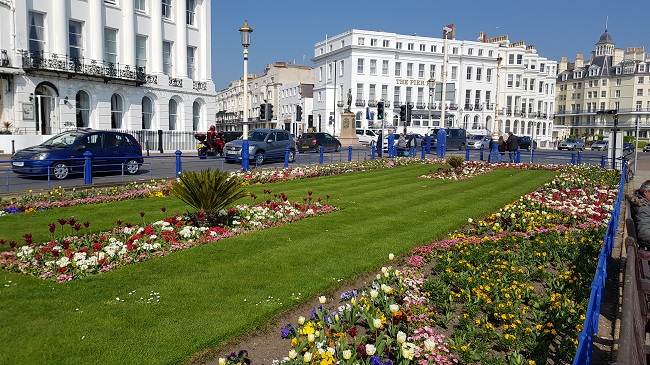Bodiam Castle
Bodiam Castle is a 14th-century moated castle located near Robertsbridge in East Sussex, England. It was built in 1385 by Sir Edward Dalyngrigge, a former knight of King Edward III. The castle’s primary purpose was to defend the local area against possible French invasion during the Hundred Years' War. Bodiam Castle has a quadrangular design and does not have a keep. All the various chambers and rooms were built adjacent to the outer defensive walls. The four corners and main entrance have towers, all of which feature crenellations. A substantial moat surrounds the castle, which served as a home for the Dalyngrigge family, as well as a seat of power to the manor of Bodiam. The castle remained within the Dalyngrigge family until the line became extinct. It remained a place of strategic importance during the War of the Roses and the English Civil War. It is currently owned and maintained by The National Trust.
After the English Civil War, Bodiam Castle was partially dismantled, leaving the stone masonry but no internal structures. During the 19th century, the castle was partially restored and as of today remains in such condition. The barbican and gatehouse remain accessible and inside the castle visitors can look around the great hall, the kitchens and the Lord and Lady’s apartments. There is also a chapel with Flemish tiles and a carved screen. The postern tower is also available for viewing, after climbing a narrow stone spiral staircase. It does afford a good view over the castle grounds. Although the castle is incomplete, there is plenty of signage providing information about its strategic function, its residents and how it was built. There is some especially grim information about how the castle dealt with waste and that sewage was dumped into the moat.
The wider parkland and grounds that surround Bodiam Castle are made up of wetland, grassland, ancient trees and deadwood habitats. There are also archaeological features and walking routes throughout the grounds. This diverse combination of environments provides food, breeding sites and shelter for a broad variety of wildlife throughout the year. Bodiam Castle is also home to one of the most important roosts in the UK, for both Daubenton’s and Natterer’s bats. Depending on the time of year, some areas of the castle are temporarily closed when the bats are most active, such as when the bat pups are born and later, when learning to fly. The moat is also home to a variety of carp and other fish which will often congregate in the shade of the moat bridge.
Bodiam Castle is an interesting attraction offering historical insight and the opportunity for a walk in the East Sussex countryside. Anglers should note that it is close to the River Rother. For those with an interest in church architecture, St Giles’ Church is nearby in the village of Bodiam, which dates back to the 13th century. Furthermore, after several hours perusing Bodiam Castle, the village of Robertsbridge is nearby and is an ideal location for lunch. The only potential downside to a daytrip in this area is that it is really only accessible by car. There are direct trains from Victoria, Cannon Street and London Bridge to Robertsbridge and a bus service that links the surrounding villages but it is a rather “scenic route”. However, travel concerns aside, Bodiam castle is another fine example of a well presented historical site, managed by the National Trust and is well worth a visit, especially in good weather.



































